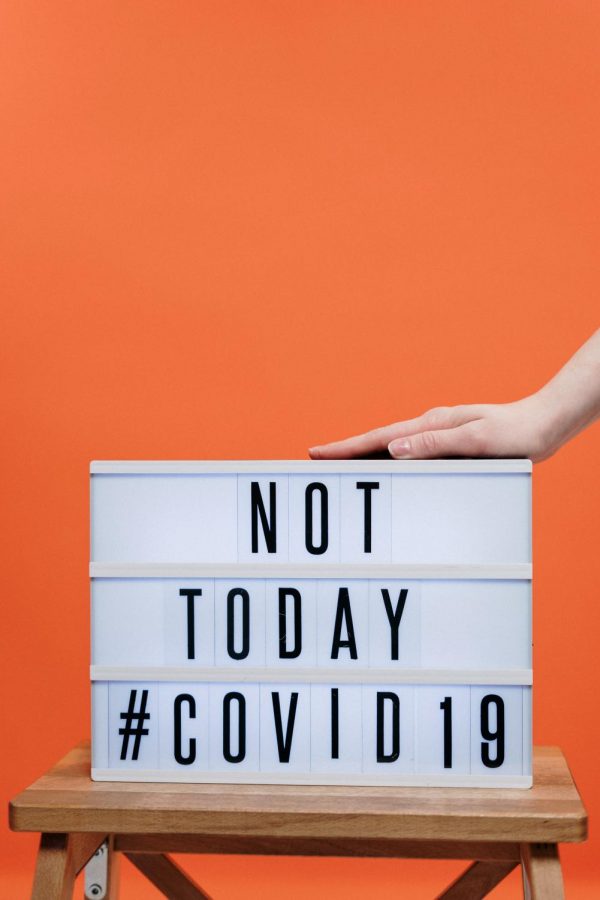What’s it like being an Asian-American in the times of the COVID-19 pandemic?
March 15, 2021
The onset of the COVID-19 pandemic put life as we know it on pause almost a year ago. As more countries closed their borders and restricted travel, many began to question the origins of the virus: Where did it come from? Why wasn’t it contained? News reports had been circulating since December 2019 about the initial outbreak in Wuhan, but they didn’t have the intended international impact until that outbreak reached the shores of the US, three months later. With the arrival of the virus came the fear of it as well. Former President Donald Trump had originally referred to COVID-19 as “the foreign virus” but that language quickly shifted into “the Wuhan Virus,” and more distastefully, “Kung Flu.” While this was not the catalyst for the disrespect and hate that the Asian community began to see at the start of the lockdown, the former President’s words did nothing to aid the issue.
As the U.S. began grappling with the COVID-19 pandemic, many people began to look for a group to blame. With the virus originating in China, some began to take out their frustrations on the Asian-Americans in their communities. Time magazine recently reported that anti-Asian hate crimes saw an increase of over 1,900% in New York City alone. Elderly people were beaten and slashed in the street, simply because they were Asian. They didn’t bring the virus to America, but they were made scapegoats regardless.
In recent weeks, there has been a spike in the reporting of anti-Asian hate crimes. Most notable is the case of Vicha Ratanapakdee, an 84-year-old immigrant from Thailand, who was pushed to the ground and died two days later due to his injuries on January 30. This media resurgence has prompted a response from many across the country calling for a social justice mobilization akin to the one that occurred this past summer. Many question why such an outcry hadn’t taken place before as Americans are no strangers to anti-Asian sentiment, the first incidents dating back to the mid 19th century. In recent history, Asian Americans have established themselves as the “model minority,” however inadvertently. In following American customs to a tee and being seen as more successful than the average non-white population, Asian-Americans sunk into the background and led lives unnoticed by the media.
This is the reason that other Americans are having such a hard time standing up for those Asians who have been wronged, not only during the pandemic but also throughout their entire history. Milan Shah, a cohead of Asian Pacific Islander Desi American affinity group (APIDA), comments on the recent coverage, “I think recently, especially on social media platforms, there has been a large shift in the narrative regarding anti-Asian racism and it has been coming more to the forefront during the pandemic.” Shah also emphasized that “the fact that more people are thinking about anti-Asian racism and bias is important, as the story of an Asian American or an Asian immigrant is one that is left largely untold.”
In the PDS community, we are constantly seeking a more inclusive and appreciative society; the most recent Upper School Gathering featured many Asian students speaking about their Lunar New Year traditions and celebrations. In November, there was also a gathering devoted to the celebration of Diwali, the Hindu New Year. Awareness has been growing outside of school as well. Many PDS students have been using their online presence as a platform to speak out against injustice for many months, but there was an especially large outpouring of support for the Asian community in the past few weeks from my fellow students. Jason Ma, a co-head of the Chinese Club remarks about his experience at PDS, “I cannot feel the effects of anti-Asian racism. People are generally kind, and I do not feel poorly treated for my ethnicity.”
The COVID-19 pandemic has put a strain on all our lives, but many groups have experienced more than just discomfort. The Asian community has become a source of blame, a “scapegoat for COVID-19” as Jason Ma puts it, for the annoyed to express frustration. No Asian American or Asian immigrant is responsible for the changes we are forced to live with today. At the end of the day, we all share this nation and are responsible for it. Such a nation cannot exist in a world where people are beaten in the streets for something that happened on the other side of the planet.
Works Cited
- Lang, Cady. “Why More Policing Isn’t the Answer to a Rise in Anti-Asian Hate Crimes.” Time, 18 Feb. 2021, time.com/5938482/asian-american-attacks/.
- Li, David. “Suspect Arrested in Violent Shoving of Asian American Woman in New York.” NBC News, 19 Feb. 2021, www.nbcnews.com/news/asian-america/suspect-arrested-violent-shoving-asian-american-woman-new-york-n1258342. Accessed 23 Feb. 2021.








